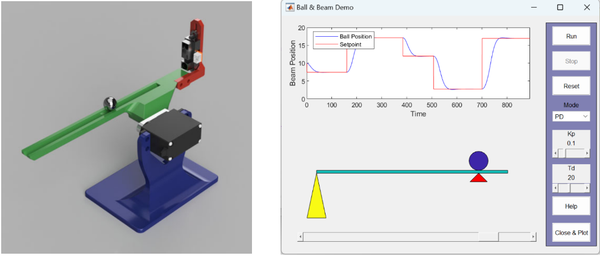Automation practices
Control digital practices for future merchant marine pilots.
Teacher's name: Rosa M. Fernández
Timing: Continued
Methodology: Laboratory practices/simulators
Class-group size: >30 students
Level of studies: Degree
Degree, semester within the degree and subject: Degree in Nautical and Maritime Transport (FNB), Q4, 280616 Automatic Control and Regulation
Possible adaptation of the activity to other subjects: Extrapolable to other similar subjects
Description of the activity:
The subject of Automatic Control and Regulation at the FNB is a classic Control Theory subject, similar to those taught at all UPC degrees, very abstract and with a lot of mathematics. This type of subject is unfriendly in a degree where students are trained to be Merchant Navy pilots. They tend to see it as "filler", too difficult (due to the level of mathematics required) and more typical of the other degrees of the Faculty.
In order for them to see its usefulness, it is decided to give it a more practical and applied aspect and to look for examples from its field.
As for the practical part, the equipment to carry out control practices in the laboratory (DC motors, magnetic levitator, inclined plane, twin rotor system,...) are too expensive and we often only have one or two units, while the large group size is 56 to 60 students. Therefore, it is decided to do fortnightly simulation practices in Matlab/Simulink and to use several apps available on the internet and on the Mathworks website, such as the seesaw-ball example (Ball & Beam Demo). In these practices, the students have to design several PID controllers and, instead of testing them on real equipment, they test them on a simulator programmed in Matlab. Animations help them understand the effect on system dynamics of the controllers they design. These practices help students to understand the basic concepts of the subject
.

As for examples in his field, one of the professors in our department (Sergio Romero Lafuente) has programmed a simulator of the automatic pilot of a ship based on Simulink and Matlab's AppDesigner. In this practice, students can see how the autopilot moves the rudder when the frigate enters a windy area in order to maintain course and speed, how the rudder moves to pass through the different way-points that the own studentship at the beginning of the simulation, and how it is reducing the speed in order to stop at the last way-point. As the boat takes the requested route and passes through the different wind zones, the student can see in real time how forward and lateral speeds, heading, propeller revolutions and blade position are changing of the rudder



Teamwork:
The simulation practices are done in pairs, but the grade is individual based on the memory presented by each student.
The couples are made by the student body.
Activity evaluation system and impact on the evaluation of the subject:
The internships are evaluated based on the individual reports presented. You don't look so much at the results (which more or less gives the same to everyone because we help them while they do them) but not at the interpretation they make of the results and the answers to the theoretical questions and previous studies (in the case that there are).
Each practice counts equally (they are fortnightly) and the practical grade constitutes 15% of the final grade of the subject. A missed practice counts as zero.
.
Promotion of attendance in the classroom:
Attendance is promoted because the simulation exercises must be done in the computer room and we do not offer the option of doing them from home.
I think it worked. Absenteeism has been greatly reduced this year, but it is also true that several actions have been implemented to reduce it, not only this.
Evidence of student assessment:
According to the student comments, the autopilot practice is by far the most liked. It's their field and they don't have to do calculations either, just observe what happens and interpret it.
Proportion of hours dedicated by the teaching staff to the hours dedicated by the students:
The calculation is teacher hours / student hours. Faculty hours include preparation, execution and evaluation. Studentship hours include both in-classroom and out-of-classroom work.
Estimate per session:
Teaching hours: 15 hours
-
- Design of the activity: 2 hours
- Preparation of the practice* (search for already made apps, think and try exercises, write a script): 8 hours
- Classroom activity: 2 hours
- Correction of the delivered activities: 3 hours
Student hours: 5 hours
-
- Previous study: 3 hours
- Classroom activity: 2 hours
(*) The autopilot application is the result of a TFG and the teacher dedicated an entire semester to develop it.
Percentage 1st year: 15 teacher hours / 5 student hours
For the following courses, the practices are already designed. So the percentage of dedication once the activity has been launched will be: 5 hours for teachers / 5 hours for student
Recommendation for colleagues when implementing this activity:
Before making the matlab app yourself, search the internet (github, mathworks, CEA...) for ready-made applications because there are some that are very good and can be downloaded for free. Also, they are usually editable and can be modified to customize them.

Share: